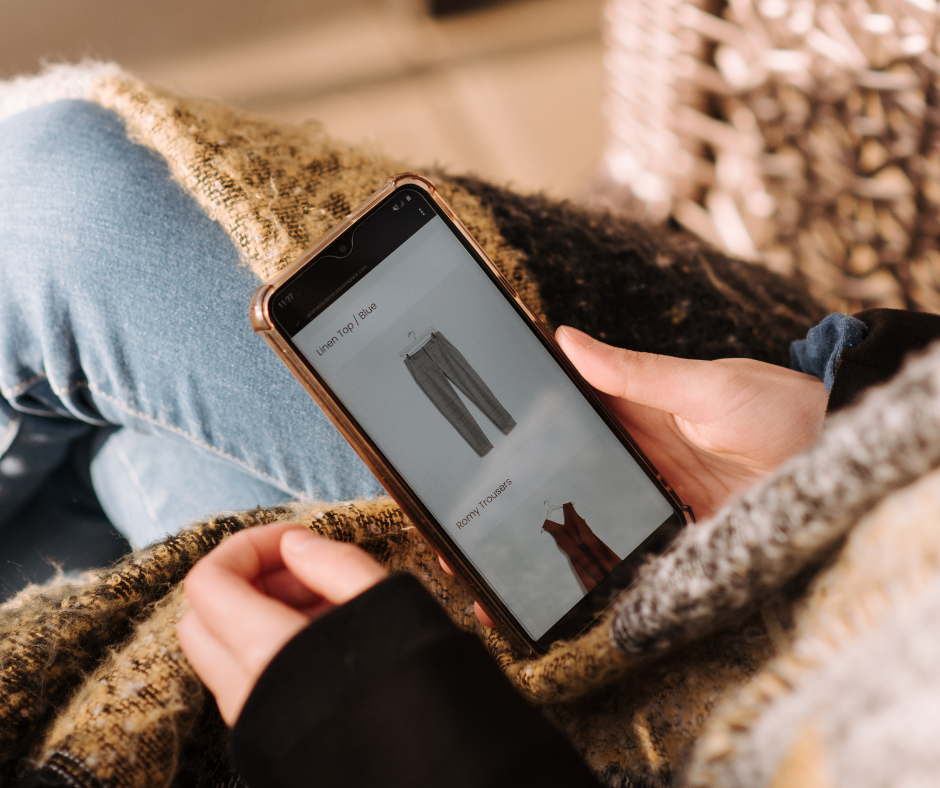

With AI & AR, Are Virtual Styling Services Actually Worth the Hype?
Summary
Virtual styling services, using AI and AR technologies, offer personalized shopping experiences and convenience, allowing users to try on clothing virtually and receive tailored recommendations. However, despite their efficiency and technological advantages, they cannot fully replace the nuanced, personal touch of human stylists, who excel in understanding and responding to complex styling needs and personal interactions.
Reflection Questions
- How might advancements in AI and AR technology further close the gap between virtual and human stylists in the future? What are the potential breakthroughs or obstacles?
- In which ways are these technologies impacting your industry?
Journal Prompt
Reflect on your personal experiences with online shopping or any interactions with virtual styling technologies. Consider how these experiences met or did not meet your fashion needs. Would you consider using a virtual styling service for your future fashion choices? Why or why not? How do you think the integration of technology into personal styling affects your perception of fashion and personal expression?
From artificial intelligence to augmented reality, virtual styling services are all the rage right now. But will these services actually help you build a customized wardrobe perfectly suited to your body shape, color season, and personal style? Platforms like Stitch Fix and Trunk Club argue that their algorithms and style simulators make for a more seamless styling experience, but can you ever truly replace the human touch of a real-life stylist? Read on to learn all about virtual stying and its place in the fashion world.
What Exactly is Virtual Personal Styling?


Each virtual wardrobe stylist attempts to deliver a personalized shopping experience through a blend of technology and fashion expertise. Core offerings include personalized clothing recommendations tailored to a user’s style, size, and preferences, often facilitated by sophisticated algorithms that learn from user feedback and preferences.
Additionally, many services incorporate virtual try-ons, utilizing augmented reality (AR) or similar technologies to allow customers to see how clothes would look on their own bodies without the need for physical fitting. This tech-driven approach extends to accessories and makeup, broadening the scope of virtual styling beyond just garments. The integration of AI not only refines the selection process over time but also ensures that recommendations become increasingly precise, reflecting the evolving tastes of the user. Let’s take a closer look at how these services use somewhat controversial technologies.
How Virtual Styling Services Use AI


Virtual styling services use artificial intelligence (AI) in several innovative ways to enhance the personal styling experience. AI algorithms analyze customer data, including past purchases, style preferences, sizes, and feedback to recommend clothing that matches their tastes. For instance, Stitch Fix uses these algorithms to curate personalized outfits for each customer.
AI helps predict the best fit for customers based on their body measurements and the sizing data of various brands. This reduces the chances of returns due to poor fit and increases customer satisfaction. Some services also use AI to analyze photos uploaded by customers to understand their style preferences better. The system can recognize patterns, colors, and styles in the images and suggest similar items available in the inventory.
AI-powered chatbots provide instant customer service, helping users with common queries about sizing, returns, and styling tips. They also provide fashion tips to help users feel confident while developing their personal brand. These bots can learn from interactions to improve their responses over time. AI algorithms can also analyze market trends and social media data to predict future fashion trends. This helps styling services stay ahead of the curve and stock items that are likely to be in demand.
Last but not least, AI helps in managing inventory efficiently by predicting which items will be popular and managing stock levels accordingly. This optimizes the supply chain and reduces waste.
How Virtual Stylists Use AR and VR


Some virtual styling services incorporate virtual reality (VR) and augmented reality (AR) technologies to enhance the user experience. These technologies provide more immersive and interactive ways for customers to engage with fashion. AR is commonly used to allow customers to see how clothes, accessories, or makeup might look on them without physically trying them on. For example, apps can overlay a dress or a pair of glasses onto a user’s image or live video feed, giving a realistic impression of how the items fit and look.
Using AR or VR, virtual fitting rooms let users try on multiple outfits virtually by using a digital avatar or a model that matches their body type and size. This technology helps reduce the hassle of physical try-ons and minimizes return rates by providing a better preview of the products. Some services use VR to create 3D models of clothing that customers can view with VR headsets. This allows users to see the garments from all angles and in different environments, providing a more detailed view than static images.
AR and VR can also simulate different style scenarios, where users can see how certain outfits would look in various settings, such as a business meeting, a casual outing, or a formal event. This can help customers make more informed decisions about their purchases. AR can make shopping more interactive by enabling features like scanning a barcode in a physical store to see additional information, customer reviews, and other available sizes or colors.
Popular Virtual Styling Platforms
Stitch Fix
Stitch Fix relies heavily on a combination of artificial intelligence, machine learning, and data analytics to personalize clothing recommendations for its users. Their algorithm adjusts based on client feedback to improve the accuracy of style selections over time. The company also uses algorithms to optimize logistics and inventory management.
Services Available
Stitch Fix offers a subscription-based service where customers receive a box of clothing items, known as a “Fix,” which are selected based on their style preferences, size, and budget. Customers can schedule their shipments or opt for an automatic delivery at regular intervals. They have the option to buy what they like and return what they don’t. Stitch Fix provides services for women, men, and children, covering a wide range of sizes including plus, petites, and maternity.
Trunk Club
Trunk Club utilizes data from customer preferences along with stylist inputs to curate clothing selections. As a part of Nordstrom, Trunk Club benefits from the broader retail technology and inventory system of Nordstrom, enhancing its capability to match user preferences with current inventory effectively.
Services Available
Originally independent, Trunk Club is now operated by Nordstrom. It offers a more premium styling service compared to many other platforms. Customers work with personal stylists to receive trunks filled with clothing tailored to their preferences and needs. Users can communicate with their stylists via the website or app to provide feedback and make requests. Trunk Club also offers the unique benefit of trying on clothes at Nordstrom’s physical locations for adjustments or alterations.
Fashom
Fashom primarily focuses on a more straightforward, user-driven selection process compared to other services that rely heavily on AI. They emphasize user choice and personalization through user feedback and selections without the algorithmic complexity of services like Stitch Fix. The company is currently exploring a rebrand, which could introduce new tech.
Services Available
Fashom offers a styling service that allows users to select their preferred items from a curated selection. When a user requests a styling session, they are sent five pieces based on their style preferences and requests. They can then try these on at home, keep what they like, and return the rest. Importantly, Fashom promotes body positivity and offers a range of sizes. It is also unique in that it allows users to see their selections before shipping, giving them the option to swap out items pre-delivery.
The Promise of Virtual Personal Styling


Virtual styling services offer several compelling benefits that address common pain points in traditional shopping. Convenience is a major advantage, as these services allow customers to explore and try on clothing from the comfort of their own homes, saving time and reducing the hassle associated with physical shopping trips.
Fuel your creative fire & be a part of a supportive community that values how you love to live.
subscribe to our newsletter
Customization is another key benefit, with services providing highly personalized advice and clothing options that match the individual’s style profile, which is continuously refined through ongoing interactions and feedback. Lastly, cost-effectiveness is highlighted through features like subscription models, where users can receive regular fashion updates at a predictable cost, and the ability to preview items virtually, which can significantly reduce the likelihood of returns due to dissatisfaction with fit or style.
These elements combine to create a streamlined, efficient, and enjoyable shopping experience that aligns well with modern consumers’ desires for quick, tailored, and economically sensible fashion solutions.
But Does a Virtual Stylist Replace an Actual Human Stylist?


The question of whether a virtual stylist can replace a human stylist touches on the capabilities and limitations of technology in replicating the nuanced service that human stylists provide. Virtual styling is great for people seeking new pieces based on their search history and hoping to identify gaps in their wardrobes, but human stylists offer a special touch that algorithms simply cannot.
The Capabilities of Virtual Stylists


Let’s review the capabilities of virtual stylists. Virtual stylists are powered by AI and algorithms that analyze vast amounts of data to make clothing recommendations. They can process user preferences, past purchases, and even current trends to deliver personalized fashion advice.
Virtual try-ons, enabled by AR technology, allow users to see how clothes will look on them without physically trying them on, offering a convenient and fast way to shop. This level of efficiency and the ability to handle a large volume of clients simultaneously makes virtual stylists particularly appealing for everyday fashion needs and broad-scale styling services.
The Unique Value of Human Stylists


Human stylists, on the other hand, bring a personal touch that is difficult to replicate with AI. They can understand subtleties of style, body language, and personal expression that a virtual stylist might not fully capture. Human stylists can also offer immediate and intuitive adjustments based on a client’s reactions during a fitting session, something that virtual stylists currently cannot do.
Their expertise in fashion and personal connection with clients allows them to manage complex styling requests, such as coordinating outfits for a specific event or integrating new fashion trends in a way that suits the individual’s unique style. They can help you mix and match pieces in a way that makes sense for your particular body and personal branding. You might feel amazing either way, but there’s no substitute for working with a human being on your style journey.
Our Determination: Virtual Styling Can’t Produce the Same Results as a Real Stylist


While virtual stylists offer remarkable convenience and accessibility, they are not likely to completely replace human stylists for those who value a high level of personalization and expert opinion. Instead, both can coexist and serve different needs and preferences.
Virtual stylists are ideal for routine fashion choices and broad audience styling, whereas human stylists excel in bespoke, high-end fashion curation and complex styling scenarios. The choice between a virtual and a human stylist ultimately depends on the level of personalization and interaction a customer desires from their fashion experience.
Should You Work with a Stylist or a Personal Shopper?


Before you choose between a virtual stylist and a human one, it’s important to determine whether you actually need a stylist or if your needs would be better met by a shopper. Styling and personal shopping overlap in many ways but are distinct in their primary focus and the services they offer. Understanding the differences can help in choosing the right service according to one’s needs. While a stylist develops and maintains an image or style for their clients, a personal shopper provides a more transactional service focused on acquiring items.
Both roles aim to enhance a client’s appearance and confidence but approach it from different angles. Individuals looking for a comprehensive style overhaul or brand new capsule wardrobe might lean towards hiring a stylist, while those needing assistance with shopping efficiently, perhaps due to time constraints or dislike of shopping, would benefit from a personal shopper’s services.
Here’s What a Personal Stylist Does


A stylist primarily focuses on crafting and enhancing an individual’s image through clothing and accessories. Stylists consider various factors such as body shape, personal style, color palettes, and the occasion for which the outfit is needed. They don’t just pick clothes but also define and refine a person’s overall aesthetic. Stylists work on a broader range of projects, including the following.
- Styling for photoshoots, television, or film.
- Working with celebrities for public appearances.
- Assisting individuals in revamping their wardrobe for a new season or lifestyle changes.
- Offering advice on overall style, including hair and makeup, to create a cohesive look.
Here’s What a Personal Shopper Does


A personal shopper, on the other hand, has a more focused role that primarily involves purchasing clothing and accessories for clients. Their expertise lies in knowing where and how to shop, staying within a client’s budget, and understanding client preferences to effectively shop for them. Personal shoppers often work within retail settings or can be independent consultants who perform the following services.
- Help new clients find specific items of clothing.
- Assist in gift shopping or special occasion purchasing.
- Save clients time by handling the shopping process, including returns and exchanges.
- Occasionally offer styling advice, but their main job is more about efficient procurement rather than conceptualizing a style.
Final Thoughts


While virtual styling services offer convenience and a personalized shopping experience through advanced technologies such as AI and data analytics, they do have inherent limitations. Virtual stylists, despite their efficiency and broad accessibility, lack the nuanced understanding and instinctive flair that personal stylists bring to the table. The human touch that personal stylists provide is invaluable, especially when it comes to understanding complex client needs, making on-the-spot decisions, and providing empathy and personal interaction that technology cannot replicate.
Personal stylists can adapt quickly to feedback during a fitting session, offer bespoke style advice that aligns with an individual’s personality, and navigate cultural or contextual subtleties with ease. In essence, while virtual stylists can streamline the styling process and make fashion more accessible, they are complemented by the irreplaceable expertise and personal engagement that only human stylists can offer.
Design Dash
Join us in designing a life you love.
-
All About Our 7-Day Focus & Flex Challenge
Sign up before August 14th to join us for the Focus & Flex Challenge!
-
Unique Baby Names Inspired by Incredible Women from History
Inspired by historic queens, warriors, artists, and scientists, one of these unusual baby names might be right for your daughter!
-
Finding a New 9 to 5: How to Put Freelance Work on a Resume
From listing relevant skills to explaining your employment gap, here’s how to put freelance jobs on your resume.
-
What is Generation-Skipping, and How Might it Affect Sandwich Generation Parents?
The emotional pain and financial strain of generation skipping can be devastating for Sandwich Generation parents.
-
Four Material Libraries Dedicated to Sustainability, Preservation, and Education
From sustainable building materials (MaterialDriven) to rare pigments (Harvard), each materials library serves a specific purpose.
-
Do You Actually Need a Beauty Fridge for Your Skincare Products? (Yes and No.)
Let’s take a look at what dermatologists and formulators have to say about whether your makeup and skincare belong in a beauty fridge.








